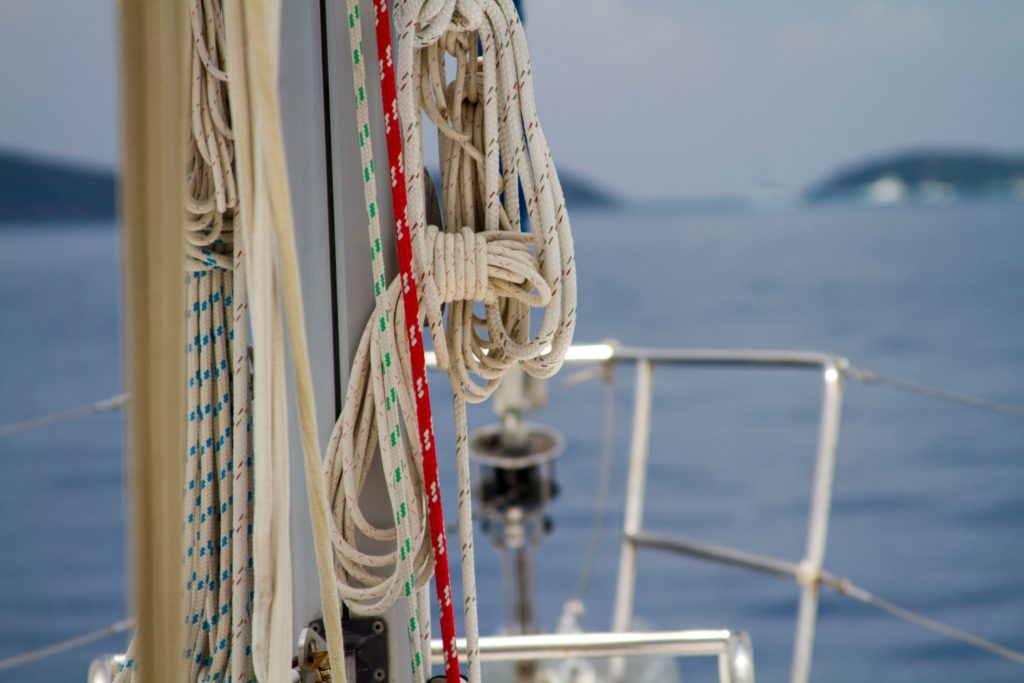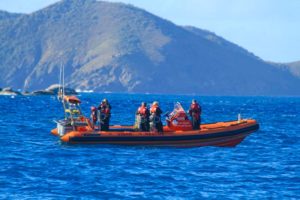
Boat prices will vary depending primarily on whether you choose to charter newer model year boats (1–5 years old) from first tier charter companies, or if you choose second tier charter companies with boats that are a little older (5–10 years). Monohulls will be less expensive than catamarans, and it seems that fleets are consisting more and more of catamarans, reflecting sailors’ preferences in chartering. More information will be provided in the “Choosing a Charter Company” section, but the basics are summarized below:
Typical monohull charters start at 32 feet and range up to around 50 feet, while cats range from about 38 feet up to around 50 feet.
When comparing costs between charter companies, be sure to compare the cost of the boat, the duration of the quoted charter, and additional fees (summarized in the following sections.)
Prices also vary by season:
- High Season. Runs November — March. Charter prices are highest in this season due to demand as sailors flee the colder latitudes to enjoy the sunshine and ideal trade wind season.
- Shoulder Season. April-May. Prices are lower than high season, anchorages are nearly empty, and the pace in the islands slows down a bit from high season.
- Low Season. June-October. Prices are lowest during this period, but this is also hurricane season, so plan with that in mind. Many enjoy low season because of the empty anchorages and slower pace.
Fees
There are a few miscellaneous fees that will be added to your charter. Most of these fees do not go to your charter company, they are impact fee type taxes for various government services. The charter companies collect these fees which is a great convenience to you when you consider the alternative of having to go to the various government offices and get them all at the start of your charter. These go to support things such as the local search and rescue organization, the national park areas you may visit, etc. Following is a typical list of these fees. Refer to your charter company for the latest pricing as prices may vary slightly year to year, however these estimates will suffice for planning.

VISAR
Visor is “Virgin Islands Search and Rescue”, this money goes to fund the local search and rescue teams, who will go into harms way for you should the unexpected happen. This is usually $2 (US) per person.
Cruising Permit
The cruising permit is your license for cruising around the British Virgin Islands. This is typically $14 per person.
National Parks Permit
Many of the places you will visit, both above and below the water, are national park areas. You may not realize you are in these areas other than noticing the convenient day mooring balls placed for you to visit many island areas. The National Parks Permit is $25 per boat.
Dinghy Fuel
Your charter company may collect some nominal charge for dinghy fuel. This is typically a $25 charge.
Insurance
There will be a charge for boat insurance, and this varies depending on the charter company you choose. This is usually charged as a per-day amount, typically $25 to $35 (US) per day depending on the charter company. Be sure to consider this amount as you comparison shop between charter suppliers. The more affordable ones will cap the daily fee at some point (for example, a $400 cap).
Security Deposit
Most charter companies will place a hold on a credit card as a security deposit. This represents the deductible on the boat’s insurance policy. This amount varies by company, but expect it to be around $1,500. This amount will not be charged to you unless there is damage to the boat. The most common damage would be keel damage if you were to run aground, or perhaps a lost dinghy. When you return the boat at the end of your charter, a diver will inspect the hull and keel for signs of damage. Once that is clear, the security hold on your credit card is released, and you keep the $1,500. In several years of chartering, I have never had a problem with the charter company returning the deposit.
Food
Food is typically more expensive in the islands than back in mainland areas. Local grocers in the islands offer full provisioning services, allowing you to order provisions ahead of time before you arrive, and they will deliver the provisions to your boat when you start your charter. For budgeting purposes, this typically costs around $30 (US) per person per day. Many options are available, ranging from full provisioning which includes food for 3 meals per day, to partial provisioning which may include breakfasts and lunches for any day, and dinners for some of the evenings.
If you choose to eat at restaurants, dinners will range from $20 (US) and up per person. Restaurants are typically on the more expensive side, compared to what you would spend in mainland areas.
More will be covered in the Provisioning section, this section is just intended to give an overview of the costs.
